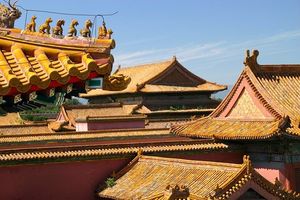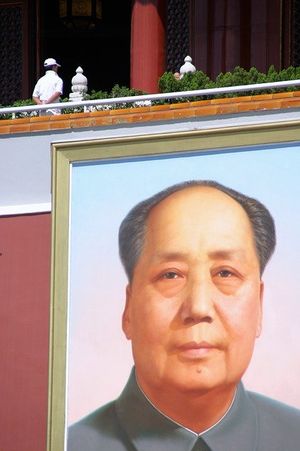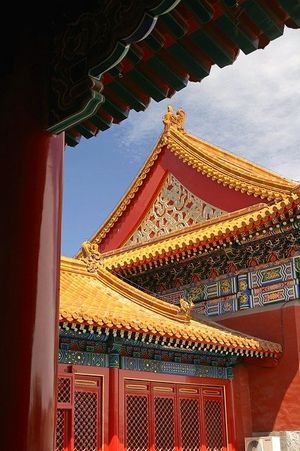In November 1868, Richard Hobson took up his ministry in Windsor – the rudest, most deprived region of south-east Liverpool. Moved by faith, love and prayer, he lost no time.
He was urgent to make a fresh beginning in the things of God for the people of Windsor. On the day of his arrival he found his way into one of the hundreds of wretched cellars that were home to whole families.
One man, three women and a child had gathered. The room was stuffy and the small boy edged his way round the room on a little stool.
Hobson prayed twice and sang hymns to them — ‘Rock of Ages’ and ‘There is a fountain filled with blood’ — and read the parable of the lost sheep. The service was short, but before it finished the Lord had wonderfully manifested his presence there.
The one elderly man was quickened to spiritual life. His changed life was witnessed by all.
Ragged School
Hobson had been commissioned to operate one of the Ragged Schools inaugurated by Lord Shaftesbury and started by St Clements, the mother church. On the Lord’s Day following, thirty adults and children gathered in its schoolroom.
Hobson preached and afterwards visited the home of each one present, Catholics and Protestants alike. He thanked God that he was favourably received and thereafter, while continuing the cellar readings, he gave himself to visiting — including the home of every child attending the Ragged School.
Hobson could never forget his own childhood. A deep sympathy for the poor — and specially for their children — would always remain with him. The grateful parents responded and soon the schoolroom was full on the Lord’s Days with people from the immediate area.
In simple language they could all understand, Hobson preached to them the pure gospel of God’s redeeming grace in Christ.
Unceasing prayer
By these means, and by unceasing prayer, the Holy Spirit moved through the Word to create spiritual interest. Before the new church was ready in the summer, there were forty of whose new birth Hobson felt assured.
Nevertheless, at Hobson’s induction as Vicar of the new church — St Nathaniel’s — in July 1869, Hobson was almost overcome by the awful degradation, lawlessness and poverty in which the masses lived.
He knew it would need ‘iron will and the strength of a lion’ if those people were to be won for God.
Already in the nine days preceding the opening of the church, seventy-six panes of glass had been smashed. Hordes of urchins had gathered round Hobson as he left the church.
The expedient of love
Instead of severity, Hobson’s expedient was love. ‘Whose house is that?’ he asked the culprits as he pointed to the building.
When they could not answer, he told them it belonged to God. But he added, ‘It also belongs to you. Would you want to break your own windows?’
Of course they wouldn’t. Hobson then commissioned the children to be ‘his little bobbies’. Delighted, they strutted away and that problem was solved.
Hobson realised that an organised approach to the immense task before him was imperative. ‘Over and over again’, he says, ‘I had recourse to the throne of grace for guidance, direction and strength’.
His pleadings were heard, for he felt assured that the system of work he arrived at ‘came from the good hand of the Lord’ (Nehemiah 2:8).
Chief remedy
Hobson had ever been certain of the attractive power of an ‘uplifted, personal, blessed Saviour’ — and the need of the Holy Spirit to produce a work of grace.
The chief remedy for sin, poverty and dirt should be the gospel of God’s free grace.
The Holy Spirit should be given a prominent place. Teaching should be evangelical and Protestant. The service should be plain, warm and heartfelt.
The great aim of the church should be the regeneration of souls, their sanctification and resulting good works.
Loving sympathy and adaptability should be constantly used as a lever. The Lord Jesus should be made known in the homes of Protestants and Catholics alike.
In these and many other objectives Hobson hoped that his past experiences would be valuable. Besides his sermon preparation, he spent six hours a day in visiting, for five days a week, and three hours on Saturdays.
Smallpox
As he went from house to house he would pray. He sought to draw alongside the people with a sympathy they recognised as genuine. If it was not possible to read or pray with them, he would leave a few words of spiritual counsel with them — and the impression that a heaven-sent visitor had been with them!
Some from outside the area gloomily predicted that getting the people from schoolroom to church would be impossible. But the Lord had his way of bridging the chasm between the two — and in a way no one would have sought.
In l870 a severe epidemic of smallpox occurred in Liverpool. Not realising that he may have acquired immunity from a mild attack in his youth, Hobson agonised over visiting the sick.
He rose from his knees fully persuaded that he should. Hobson would never experience anything more loathsome than visiting the suffering in their ‘filthy foetid homes’, but the Lord gave him the grace to do it.
Power of the living God
In his thirty-three years of ministry in Windsor, nothing helped to remove the distance between church and people as his standing by them in their great distress. It won for Hobson the confidence and good will of the people.
Church attendance vastly increased, and even ‘the roughs’ began to appear in the congregation. Many cases of spiritual blessing emerged from that terrible ordeal, and God was glorified among the people in that Hobson came out of it unscathed.
By the end of that year, the Men’s Bible Class numbered one hundred and eleven.
The Lord had demonstrated wonderfully that the pure gospel, preached and lived out before their eyes, had lost none of its ancient power.
Greatly encouraged, Hobson would never regret having turned his back on far more attractive livings. He had seen the power of the living God.
Yet there still remained a great work for Richard Hobson to do — for it was evident that ‘the Lord had much people in that city’.














